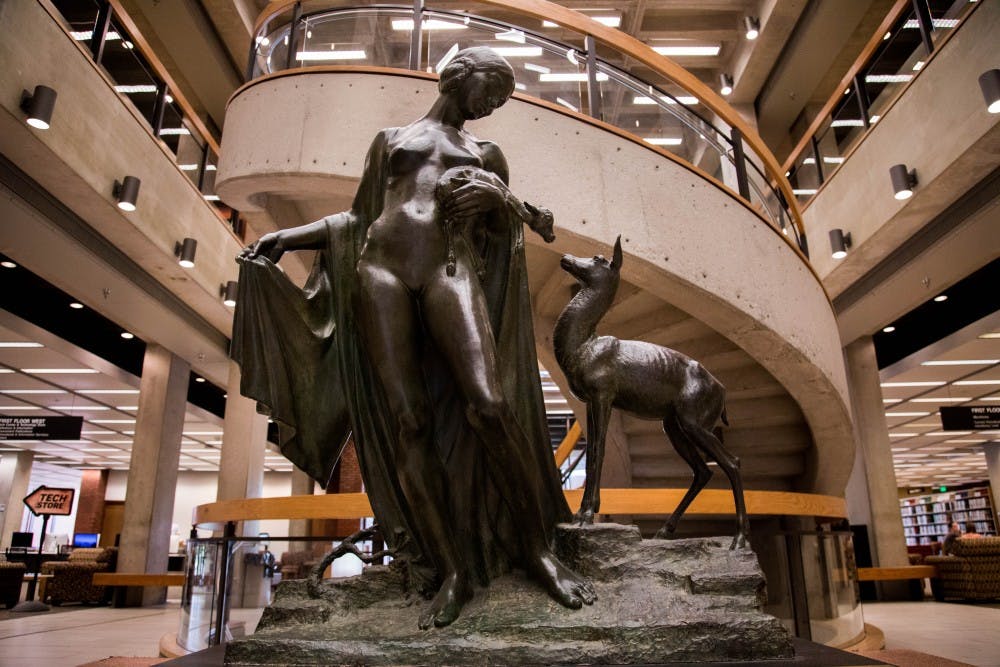Editor's note: In honor of the university's centennial year, The Daily News is counting down 100 days to the university's celebration Sept. 6 with 100 of Ball State's most famous traditions and figures. Check back each day to read about Cardinal history.
Forest Idyl, or better known to students as “The Naked Lady,” sits in the middle of Bracken Library, serving as a common meeting place on campus.
The Naked Lady located on Ball State’s campus was sculpted in bronze by Albin Polasek in 1930. She is one of four known castings of the original, which was first created by Polasek in 1924 when he was head of the sculpture department at the Art Institute of Chicago.
A reporter for the Chicago Tribune, Eleanor Jewett, wrote at the time, ““This beautiful bronze group is one of the most perfect and exquisite conceptions in the exhibition, in either oil or sculpture. The wonderful modeling of the deer and the fawn mark it for a masterpiece. The tender union of the dryad and her wild forest companion is a beautiful achievement.”
The other castings can be found in Brookgreen Gardens in South Carolina and in the Albin Polasek Museum & Sculpture Gardens and City Hall in Winter Park, Florida.
Ball State’s copy of Forest Idyl is different from the others in that it still has most of its original green patina, a green or brown film on the surface of bronze or similar metals, because it has been displayed indoors, away from weather damage.
The piece depicts a nature scene of a wood nymph with two deer, giving the statue the “forest” part of its name. Merriam Webster defines idyll as, “a simple descriptive work in poetry or prose that deals with rustic life or pastoral scenes or suggests a mood of peace and contentment.”
The statue first came to the university in 1937 when Frank C. Ball added it, along with 15 other bronze sculptures and 11 paintings, to his collection in the art galleries. It was purchased and displayed along with Frog Baby, before both sculptures found new homes on other parts of the campus.
Read more centennial content here.
Contact Brynn Mechem with comments at bamechem@bsu.edu or on Twitter @BrynnMechem.





